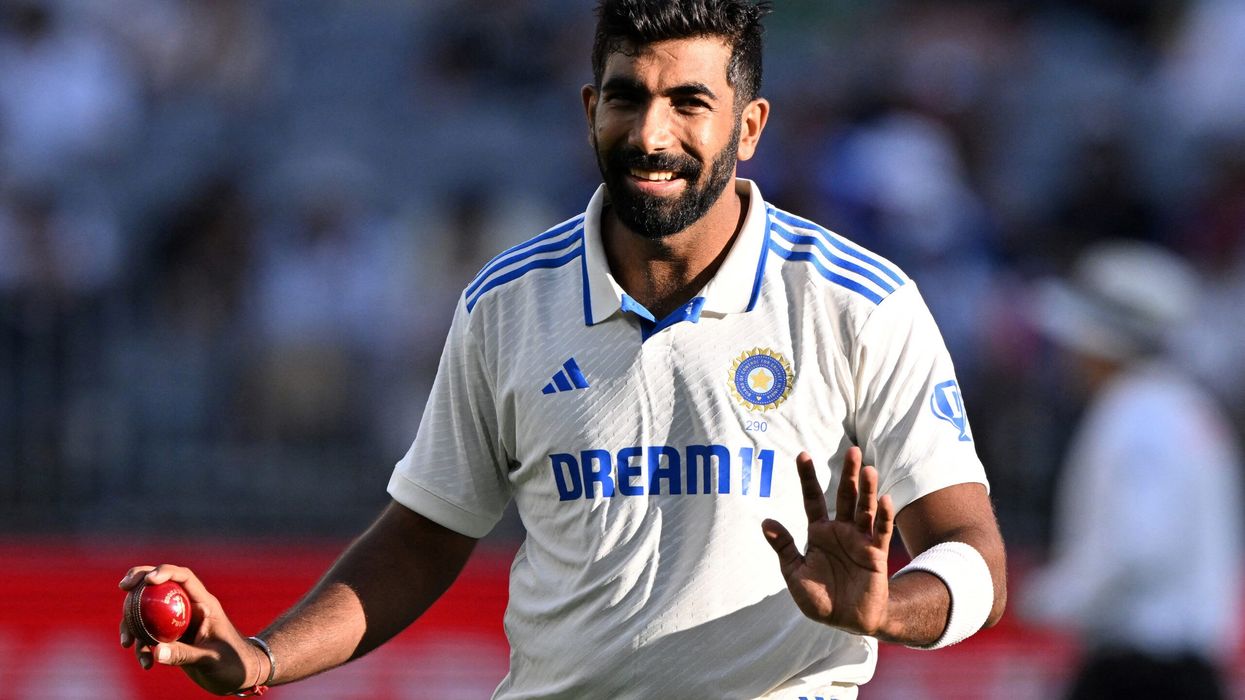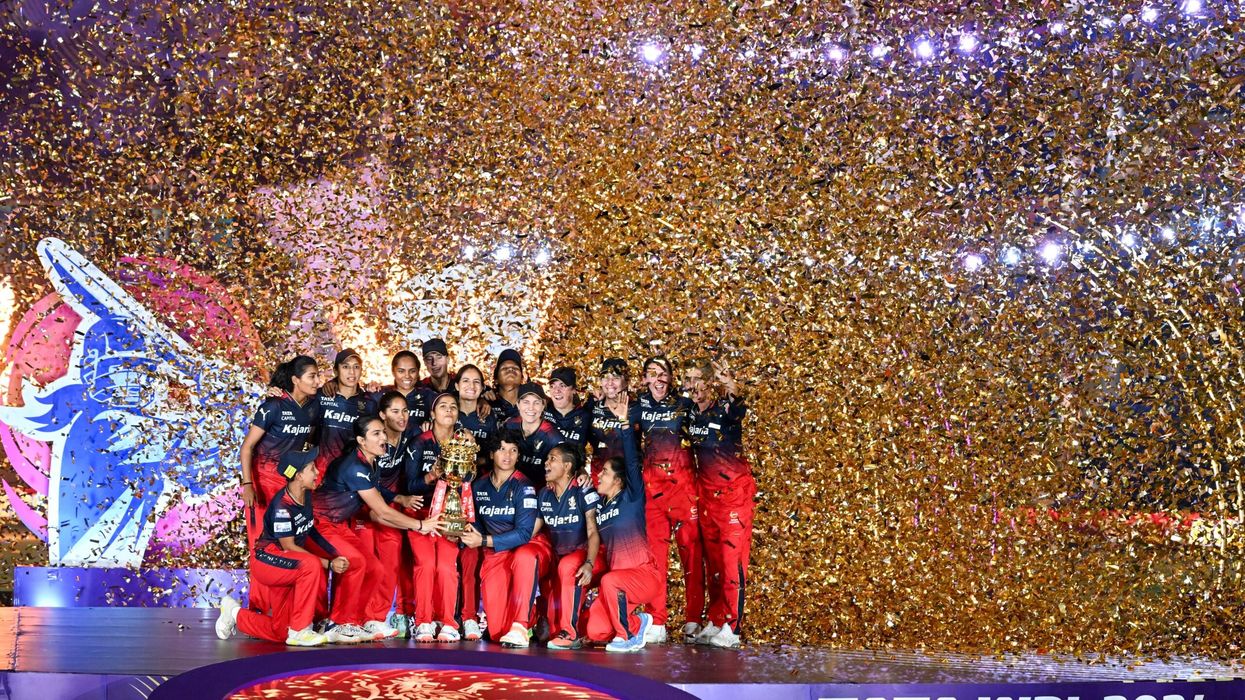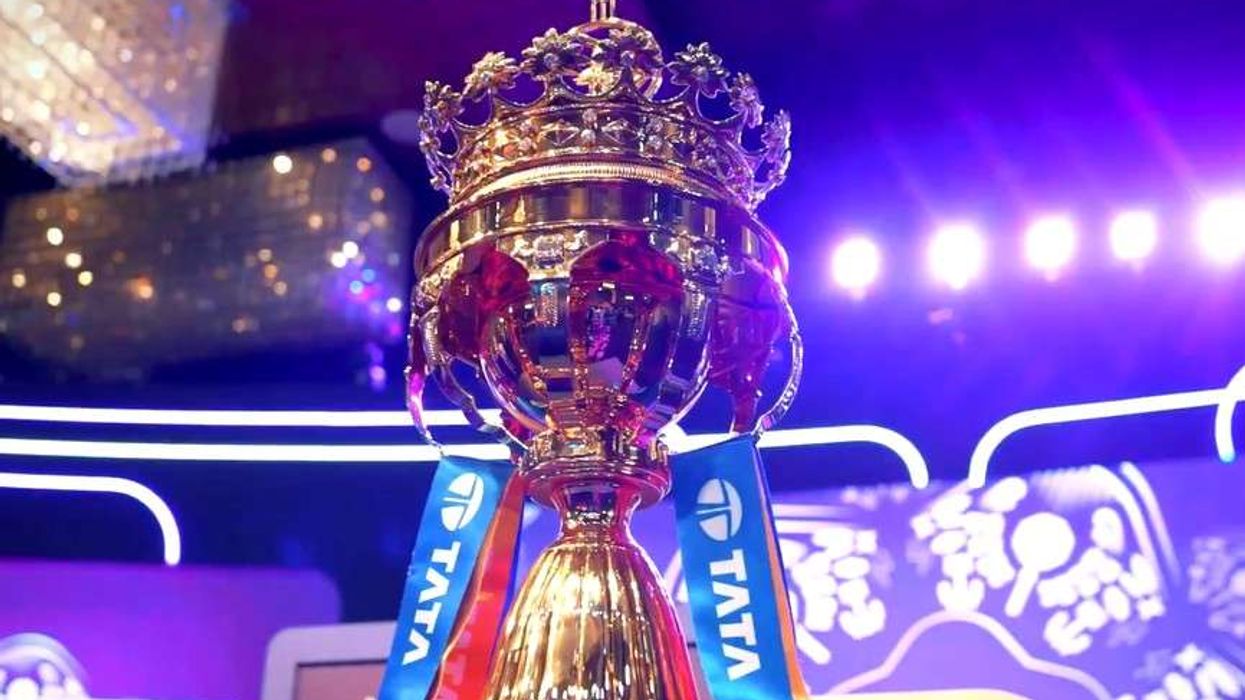Daniel Silverstone, a professor of criminology and an expert in policing studies, attended the Champion’s League final in Paris and witnessed chaotic scenes. Here, he and Jan Ludvigsen examine what the latest research can tell us about how to tackle an issue that continues to bring football – and the authorities that police it – into disrepute.
I was one of those unlucky Liverpool fans, caught up in the middle of the chaos battling to enter the stadium’s gate Y at the Stade de France in Paris on Saturday. As I left the match, I saw a Liverpool fan who had already been pepper-sprayed chased by a French police officer, despite his colleagues urging him not to. The fan was then hit from behind on the back of his head with a wooden baton.
Panic, horror and chaos. These are just some of the words that have been used to describe the events that occurred during what became a memorable night for all the wrong reasons in the French capital. Security and safety issues continue to trouble football and the world’s other biggest sporting events and repeatedly become the key talking point once the final whistle blows.
I went to watch Liverpool take on Real Madrid with my sister, brother and a family friend. Like all Liverpool fans we had been looking forward to the culmination of exciting season. But the excitement soon turned to fear when we realised that we were getting caught up in something that was beyond our control. We were getting crushed outside gate Y, jostling with security to prevent them from closing the gate on us. Similar scenes were also reported outside gates X and B.
I had flashbacks to Hillsborough, the stadium disaster on April 15 1989 which resulted in the tragic deaths of 97 Liverpool fans. I remember watching dazed fans, numb from shock, on the television. In Paris, I thought history was about to repeat itself. We all felt a sense of dread. A brief, intense moment that we couldn’t breathe and that we might not make it. Somehow, a much anticipated, post-COVID joyous family event had suddenly switched to what felt like a family fight for survival.
Luckily – and miraculously – everyone survived that night in Paris. And it was only when we managed to get to our seats that we realised how our experience was not uncommon. In front of us were disgruntled fans who had arrived at 6.30pm and endured two hours of queuing. All around us were empty seats of Liverpool fans who hadn’t made it in. And behind us, the one fan who arrived just before half time. He was pale after being tear-gassed.
This story is part of Conversation Insights.
The Insights team generates long-form journalism and is working with academics from different backgrounds who have been engaged in projects to tackle societal and scientific challenges.
Paris now needs to be a catalyst for how authorities consider issues of security at football events. I have been working as an academic for decades and recently as a director of a Centre of Policing Studies. Ironically, one of my most recent pre-COVID assignments was organising – in conjunction with Merseyside Police – the delivery of human rights based training in Liverpool to Qatari police ahead of the World Cup. My colleague Jan – who followed the final from his home in Liverpool – is a sociologist who actively researches and has published extensively on the relationship between sport mega-events, security and football fans. Mine and Jan’s backgrounds therefore enable us to provide reflections on what happened in Paris and, crucially, what needs to be done in the future.
Before anyone really knew what was happening in Paris, fans were being blamed. Broadcasters announced that the match, which was due to kick off at 9pm local time, was delayed by 36 minutes. As displayed on the stadium’s giant screens, this was, in UEFA’s own words, due to the “late arrival” of fans. Yet, the fact was many Liverpool fans were at the stadium hours before kick-off and reports and footage began emerging on social media showing dangerous queues, closed gates near the turnstiles, the use of tear-gas by French police and a general sense of desperation spreading among supporters, families and media reporters outside the stadium gates.
Liverpool FC were quick to announce that the club would request a formal investigation into the causes of the security issues and they have subsequently encouraged fans to share their experiences. UEFA also confirmed that they have commissioned an independent report that will investigate the events surrounding the final.
But French authorities have remained adamant that the issues were caused by ticketless fans and counterfeit tickets – this claim has been heavily contested. Unusually though, in this digital age, many fans were allocated paper tickets. What affect that had on the claims of fake ticketing is, as yet, unclear.
France – and Paris specifically – is not a newcomer when it comes to staging large-scale events and internationally significant football fixtures. In 2016, the city hosted another UEFA event, the European Championship in men’s football, while the country was in a state of emergency following a series of terrorist attacks in November 2015, including suicide bombers who struck outside the Stade De France after failing to get past the stadium entry. Sadly, Euro 2016 was also disrupted by violence, disorder and clashes between fans and the police.
But this is not just a French problem. There is no doubt that the UK is fighting its own security battles, as the upsurge in pitch invasions in recent weeks show. And there was also a major security breach at Wembley Stadium for the Euro 2020 (held in 2021) final, where ticketless fans managed to break through the security barriers and turnstiles and gained access to the stadium.
Months later, in January 2022, a crush at the Olembé Stadium in Cameroon during the Africa Cup of Nations tragically resulted in eight deaths. All of which adds to the mounting evidence that the problem of security and safety in football is getting worse.
Research into football policing suggests that the absence of communication and dialogue between police and crowds are two factors that can contribute to the escalation of disorder. As Jan’s research underlines, there must be mutual respect and understanding between fans and those responsible for security.
One of the reasons for this is that the policing of football matches is highly complex – both on the ground on match days, but also in its pre-planning lead up to the fixtures. The policing of fans is also not limited to the stadium rings. Large numbers of ticketless fans travel to sporting events and choose to attend fan zones or other public viewing events. To account for this, Jan’s recently published book shows how major sporting event security relies much upon the transfer of so-called “best practices” that migrate from event to event. These processes are aided by a European-wide security networks consisting of diverse stakeholders, such as law-enforcement, governing bodies, national associations and organised fan networks.
Before the final in May, Merseyside Police would have provided the French authorities with a “closed briefing” of what and whom to expect along with other risk assessments. They would have also sent a team of “spotters” to work with Spanish and French police. According to a former crowd safety and security adviser at Liverpool’s Anfield stadium, this briefing ought to have included an appraisal of the usual problems such as fans without tickets, drunken supporters and fake tickets. A joint session between the two French police forces, the Gendermarie and the Compagnies républicaines de sécurité (CRS), with the British police and UEFA would have also gone through a complete run through of the event.
Open-source intelligence work would have shown UEFA and relevant authorities the numbers of fans to be expected as all flights and trains from the UK to Paris were fully booked weeks in advance of the final. So, the authorities had plenty of time to put in place a communication strategy for arriving fans. This should have included both instruction on how to enter and exit the stadium safely and advice that fans should be careful of their personal safety within the local area in the immediate vicinity of the stadium when they were leaving the game. Instead, indications of what awaited – and perhaps what to expect – emerged in the fixture’s build up, when it was reported that fans wearing club colours in the area around the Champs Elysees could risk a fine from the French police. So no warnings, no information – just punitive action.
Football fans are comprised of a diverse social group, and research shows that many supporters expect and even welcome security when they go to a game. And that seems to have increased since big sporting events increasingly became targets for acts of terrorism, supporter violence and urban crime.
And with elite football comes mass crowds, rendering potential issues of overcrowding a very real risk. So fans are alive to these dangers, and appreciate that their security and safety are being prioritised by security and event managers when, or if, trouble arises.
But, it is all about striking a balance: an excessive presence and largely overt security measures may be perceived as both intrusive and contributing to an oppressive or sanitised atmosphere in stadiums. For example, when security staff crackdown on innocent fans with banners or fans wearing clothes promoting unlicensed products.
In addition to security and safety, service measures are a key pillar of European approaches to football matches and sport events. In a nutshell, the emphasis on “service” creates a welcoming and enjoyable event for supporters. This can lead to feelings of safety and can be achieved through, for example, information points or designated individuals assisting supporters who often find themselves in a new city. Think of the volunteer helpers, who helped make the London Olympics in 2012 such a welcoming environment for spectators.
However, in the case of the Champions League final, it appears that the core principles and service standards for ensuring that fans are treated well and feel safe were abandoned or collapsed. In some areas around the stadium where the gates were shut, stewards were reportedly absent and information about the match’s delay was never provided to supporters.
I witnessed, first hand, that safety was an issue at every step along our journey to the stadium. Even the roads leading there were so jammed with traffic, that people were leaving taxis to jump over reservations in a bid to reach the game. Something as mundane as buying food and a drink in the Liverpool section was so poorly managed that the long queues at half time ultimately led to frustrated supporters arguing among themselves.
And as the game’s kick-off was approaching in Paris, the official UEFA security and the Compagnies républicaines de sécurité kept fans in long queues without instruction and closed entrance gates without warning. They refused to respond to basic and polite fan questioning in regards to essential matters, such as how to exit the stadium or to cross the main road which runs next to the station and needed to be crossed for fans to seek transport home.
But far worse than that, the police began resorting to violent tactics such as deploying pepper spray, teargas and their truncheons without clear warning.
While policing in the UK has rightly been subject to intense scrutiny, the service retains the ethos of community policing based on dialogue and mutual respect. It can be argued that the French police do not share this ethos and this has resulted in other brutal actions, such as the prolonged beating of black music presenter in Paris and widespread allegations of heavy handed policing of demonstrators and minorities.
There is also another broader structural issue for French society – the failure to integrate and empower the next generation of migrants and their children living in the types of decaying banlieues close to the stadium.
It was obvious to everyone there on the day that a key security issue was the presence of a sizeable group of young local men intent on entering the ground. There have also been numerous reports of visiting fans being mugged.
The extent of this disillusion within French society was evident in 2015 when suicide bombers attacked the Stade de France. Following that attack, one study explored survey responses from 1,500 football fans, some of whom believed that “nothing would be the same again” in terms of football security and safety. Sadly, the Champions League final shows that nothing has in fact changed, structurally, within the areas of Stade de France.
Studies have clearly established the link between some criminal and terrorist groups with football’s international audience and its plethora of high profile attendees. So Saturday’s final was a high-value target.
To make all football fans safer, the French authorities need to heed the lessons of the inclusion work which has had some success in other European countries and the UK. For example, in challenging terrorist narratives and proposing alternative narratives which focus on what society is “for” rather than “against”.
Overall, both history and research shows that when disorder spreads at a football match or sporting event multiple factors play a role.
Rarely are fans solely to blame when things go wrong – yet that has been the dominant discourse in this case: first blaming fans’ “late arrival”, then “ticketless” fans and then “fake tickets on an industrial scale”.
This is pure rhetoric and reinforces the criminalising discourses that present a view of fans as “threats” and “potential troublemakers”. Sadly, and tragically, Liverpool fans have seen this played out before and had to fight over two decades for justice following the Hillsborough Disaster – another event that was appallingly managed by the police and where blame was shifted to the fans.
Indeed, one of the key lessons from the Hillsborough Panel and subsequent inquests are the dangers involved when the first narratives that emerge from the perspectives of the authorities, sport’s governing bodies or the police, are blindly and uncritically accepted. Then, the disaster’s aftermath also led to a greater emphasis being placed on health and safety in English football and beyond, including the all-seated stadia. Indeed, the recent events demonstrate how these lessons are as relevant as ever.
International fan networks have been quick to react, and voice their support for Liverpool supporters on Saturday. For example, the pan-European supporter network of Football Supporters Europe (FSE) – which is recognised by UEFA as a legitimate partner on matters of security and safety in football – tweeted as the events unfolded: “Fans at the Champions League final bear no responsibility for tonight’s fiasco.”
Merseyside Police also stated that the Liverpool fans’ behaviour was “exemplary in shocking circumstances”, while troubles were also experienced by Spanish fans visiting Paris.
Hillsborough is a powerful example of exactly why it is imperative that football fans are not scapegoated – but that their voices and versions are listened to. And that – despite the French and UEFA narratives that followed the match – evaluations and critical reflections into the organisational issues that negatively effected the final provide tangible lessons that inform practice and policy at future events.
Courtesy: Reuters













